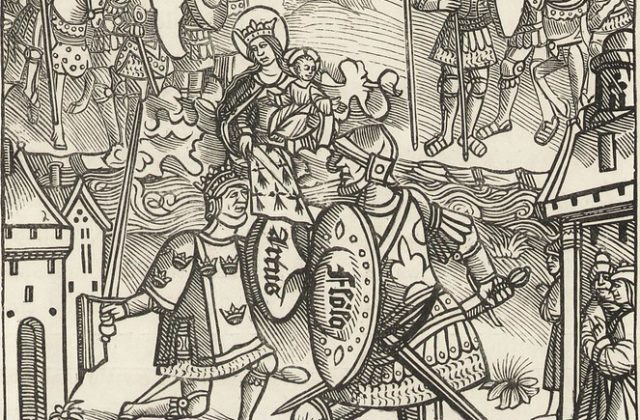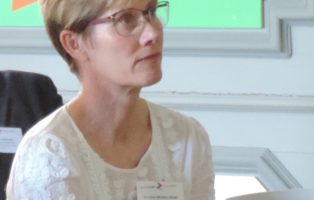How would you explain the concept of justice in the context of your research?
What I really want to get across in this project is how these late medieval tales of chivalry were intended not just to entertain their aristocratic readers but also to instruct them; they’re a kind of political literature. In particular, I’m interested in how they deal with questions of justice, whether as a personal virtue that a good knight or a good ruler has to show in all his actions, or as a set of legal processes. After all, the main motor of the narrative in these tales is an act of injustice such as adultery, murder, rape, slander, or usurpation, and so in order to right these wrongs there are trials, judicial duels, confessions, and punishments. I’m looking, for example, at how just wars are fought as a way of restoring equity and peace and how characters – both male and female – obtain legal redress for the misdeeds that have been perpetrated against them. Acts of chivalry, in other words, are shown in these works to be about not just obtaining personal glory but also serving the greater good by upholding justice.
In what way do you identify a visual representation of justice?
We are probably all familiar with the iconography of Justice as a female figure with a blindfold to show her impartiality, a set of scales to show her desire for equity, and a naked sword to show her implacability. However, the texts I work on show justice in many different ways: through images of trials by combat, courtroom scenes, and battles. In these images, it’s often like having to crack a code in order to see who is in the right and who is in the wrong. For instance, being on the right of a judge in a courtroom scene shows innocence and being on his left shows guilt; bodily gestures such as a bent arm when testifying at court indicates that the person is committing perjury; even moving across the image from left to right in a battle scene can imply the justness of a cause compared to that of the figure moving from right to left. It’s fascinating!
In what way do you see the representation of justice in your research in the contingency of representation of justice leading up to contemporary representations?
The idea of fighting a just war, for example, is just as relevant today as it was back in the Middle Ages; today we have the Geneva convention but then they had manuals of warfare setting out who had the authority to declare a war in the first place for it to be legitimate, and how that war was to fought in terms of the rules of engagement. What is different and perhaps unexpected for the modern reader is that images were used in books, whether theoretical manuals of warfare or the tales of chivalry that I work on, in order to translate these abstract ideas into concrete form. Even law books in the Middle Ages were illustrated as a way of getting these points across.
What does your day look like today?
Since my work on the primary sources, which are illuminated manuscripts held mainly in libraries in Paris and Brussels is completed, I’m mainly now drafting the introductory chapters that will provide a historical context for my analysis. My time is therefore split between writing drafts and reading secondary sources.
What got you started on this specific research topic?
I started working on late medieval French romances in 2004 and this culminated in a book published in 2008. My approach to these tales of love and chivalry was then very much about how they prescribed and yet played with gender roles, whether in pre-marital, marital or extra-marital relationships, with their male characters in particular having to learn to strike a balance between their emotional lives and their public duties as knights and as future rulers of a realm. In this book I just focused on the texts but now I’m working on the way in which the image cycles that often accompanied these tales in their manuscript form offer a first level of interpretation of their key ideas for the reader. The particular angle I’m taking this time is to look at how the images convey the texts’ presentation of ideas about law, power and justice in chivalric society, an approach that I adopted as part of my involvement in a major research project being run at the University of Orléans in France that examines the interface between literature and the law across the ages.
What do you value about NIAS so far?
Having the time to think, write and read in depth have been great. There is always something to be learnt too from each Fellow’s seminar presentation, even if their discipline is very different from your own.
Have you had any exemplary noteworthy experiences at NIAS or Amsterdam in general?
At the Poetry and Falafel evening that Gyath Alhmadoun and I organised it was great that so many of the Fellows and Staff joined in with reciting a poem, some choosing to do it in their native tongue and others in English translation. It was really lovely to find out what each person’s chosen poem meant to them and to hear how all the different languages have their own special lyrical quality to them.




